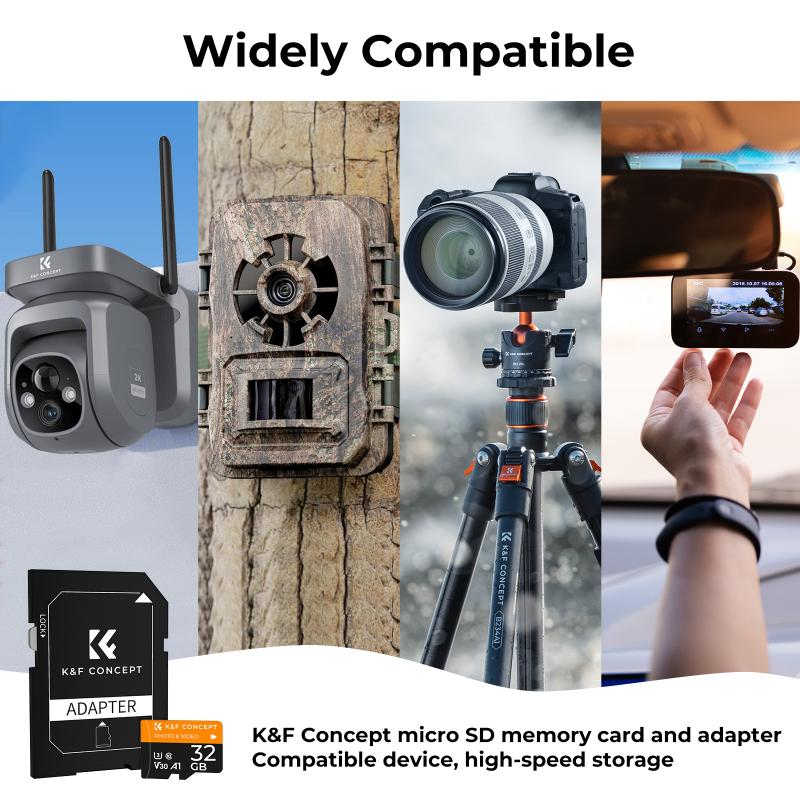How Big Of A Sd Card For Switch?
When it comes to expanding the storage capacity of your Nintendo Switch, choosing the right size SD card can be a bit of a conundrum. With the increasing size of game files and downloadable content, it's essential to make an informed decision to ensure you have enough space for your gaming needs. In this article, we will delve into the various factors you should consider when selecting an SD card for your Nintendo Switch, and provide practical advice to help you make the best choice.
Understanding the Storage Needs of the Nintendo Switch

The Nintendo Switch comes with a modest 32GB of internal storage, a portion of which is used by the system itself, leaving you with even less space for games and other content. Given that some games can take up several gigabytes of space, it's easy to see why many users quickly run out of storage. This is where an SD card comes in handy, allowing you to expand your storage capacity significantly.
Factors to Consider When Choosing an SD Card

1. Game Library Size
The size of your game library is one of the most critical factors to consider. If you primarily play smaller indie games, you might not need as much additional storage. However, if you enjoy AAA titles, which can be quite large, you'll need a more substantial SD card. For instance, games like "The Legend of Zelda: Breath of the Wild" and "Super Smash Bros. Ultimate" can take up over 10GB each.
2. Downloadable Content (DLC) and Updates
Many games receive regular updates and downloadable content, which can add to the overall storage requirements. If you plan to download a lot of DLC or if you play games that receive frequent updates, you'll need to account for this additional space.
3. Digital vs. Physical Games
If you prefer to buy digital versions of games, you'll need more storage compared to someone who buys physical cartridges. Physical cartridges do not require as much storage space since the game data is stored on the cartridge itself, although some games still require additional downloads.
4. Future-Proofing
It's also wise to consider future-proofing your storage. As new games are released, they tend to be larger in size. Investing in a larger SD card now can save you the hassle of upgrading again in the near future.
Recommended SD Card Sizes

Based on the factors mentioned above, here are some general recommendations for SD card sizes:
64GB SD Card

A 64GB SD card is a good starting point for casual gamers who play a mix of digital and physical games. It provides enough space for several large games and some smaller titles. However, if you plan to download a lot of games or DLC, you might find yourself running out of space sooner than you'd like.
128GB SD Card
A 128GB SD card is a popular choice among many Switch users. It offers a good balance between cost and storage capacity, allowing you to store a substantial number of games, updates, and DLC. This size is ideal for gamers who have a moderate to large game library and prefer digital downloads.
256GB SD Card
For those with extensive game libraries or who prefer to download all their games digitally, a 256GB SD card is a solid choice. It provides ample space for numerous large titles, updates, and DLC, ensuring you won't run out of storage anytime soon.
400GB and Above
If you're a hardcore gamer with a massive collection of digital games, or if you want to future-proof your storage, consider an SD card with 400GB or more. While these cards are more expensive, they offer the most storage and can accommodate even the largest game libraries.
Speed and Performance
In addition to size, the speed of the SD card is another important consideration. The Nintendo Switch supports UHS-I (Ultra High Speed) microSD cards, which offer faster read and write speeds compared to standard SD cards. A faster card can reduce loading times and improve overall performance, especially for larger games.
Look for SD cards with a UHS Speed Class rating of U1 or U3. U1 cards have a minimum write speed of 10MB/s, while U3 cards have a minimum write speed of 30MB/s. While U1 cards are generally sufficient for most games, U3 cards can provide a slight performance boost, particularly for games with large file sizes.
Brand and Reliability
When it comes to SD cards, brand and reliability matter. Reputable brands like SanDisk, Samsung, and Kingston are known for their high-quality and reliable SD cards. Investing in a card from a trusted brand can help ensure your data is safe and that the card will perform well over time.
Practical Tips for Managing Storage
Even with a large SD card, it's essential to manage your storage effectively. Here are some practical tips to help you make the most of your available space:
1. Regularly Delete Unused Games: Periodically review your game library and delete games you no longer play. You can always re-download them later if you change your mind.
2. Use Cloud Saves: Take advantage of cloud save features to back up your game progress. This way, you can safely delete games without losing your progress.
3. Organize Your Content: Keep your SD card organized by creating folders for different types of content, such as games, DLC, and updates. This can make it easier to manage your storage and find specific files.
4. Monitor Storage Usage: Regularly check your storage usage to ensure you have enough space for new games and updates. The Nintendo Switch provides tools to help you monitor your storage and manage your data.
Choosing the right size SD card for your Nintendo Switch is crucial for ensuring you have enough storage for your gaming needs. By considering factors such as your game library size, downloadable content, and future-proofing, you can make an informed decision that will serve you well in the long run. Whether you opt for a 64GB, 128GB, 256GB, or even larger SD card, investing in a high-quality, reliable card from a reputable brand will help you get the most out of your Nintendo Switch gaming experience.












There are no comments for this blog.